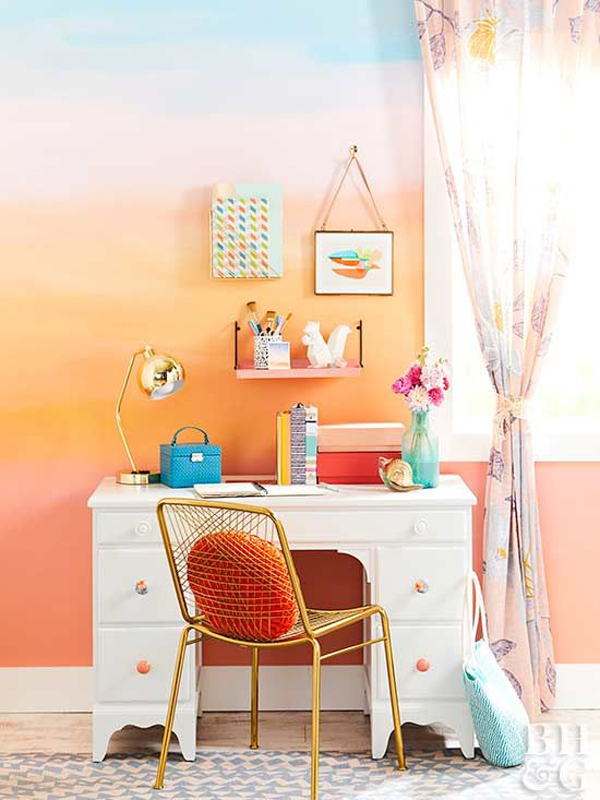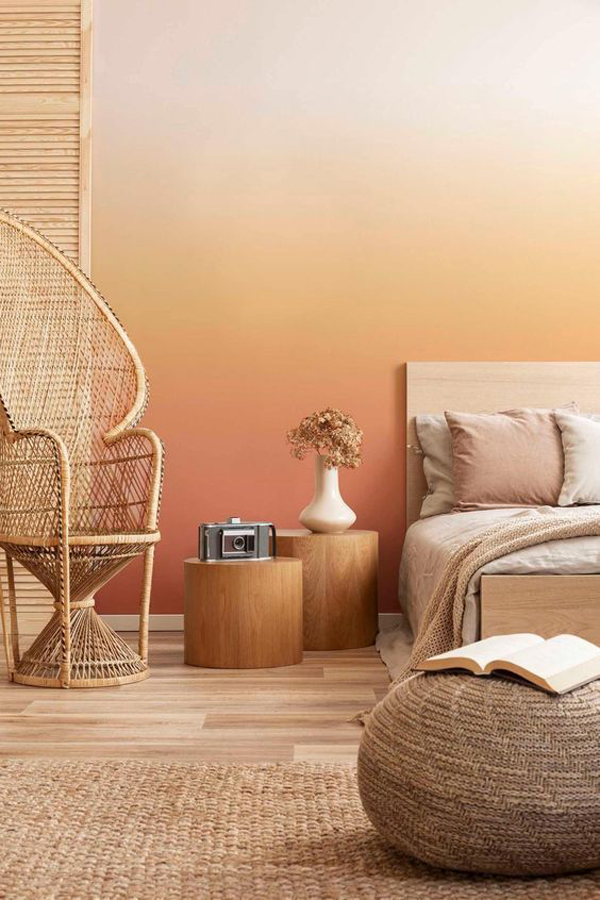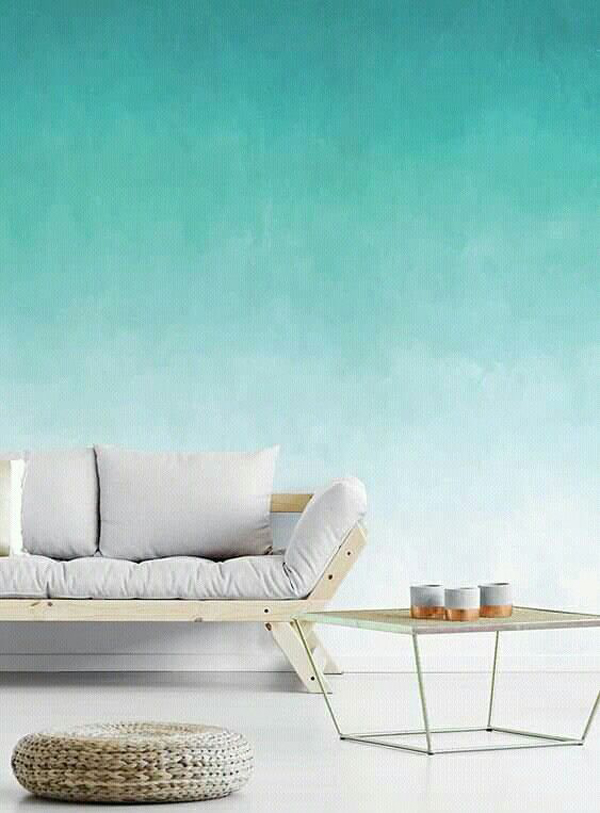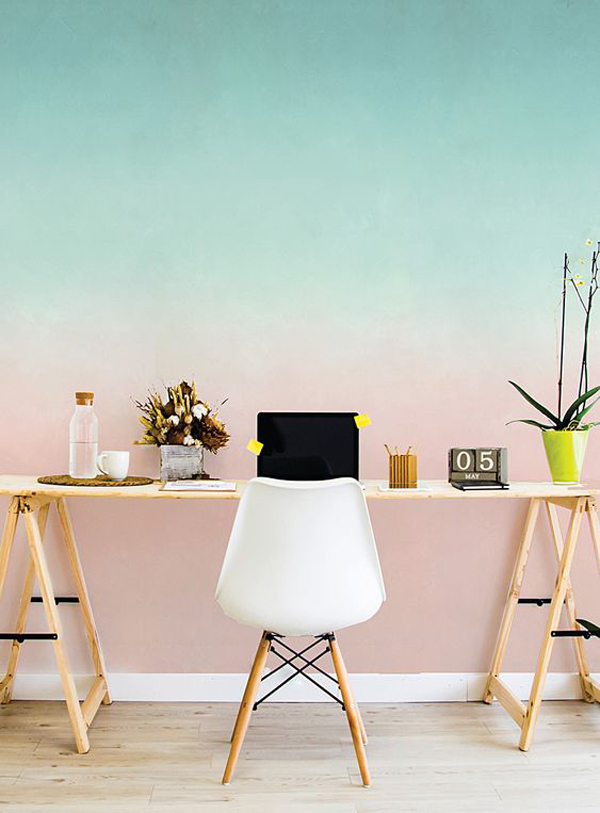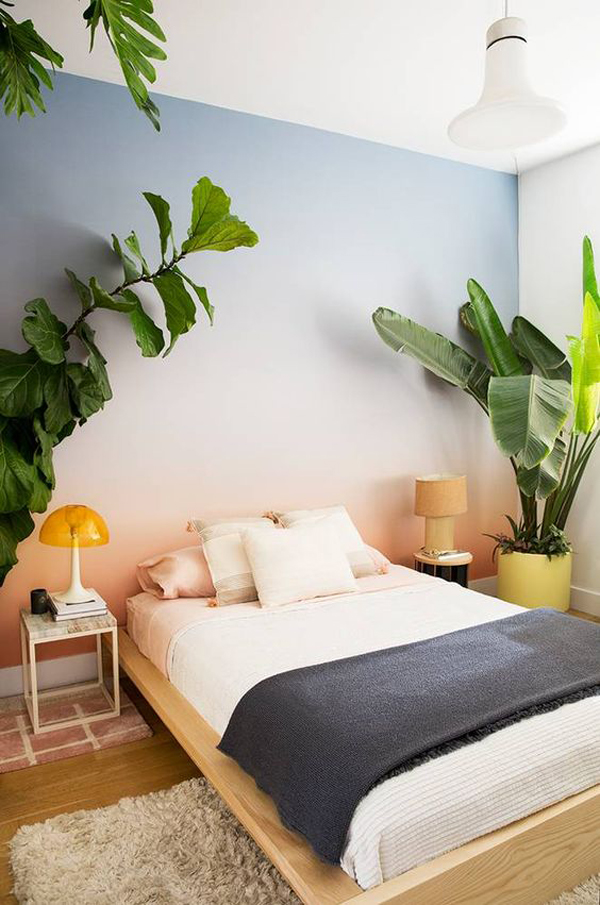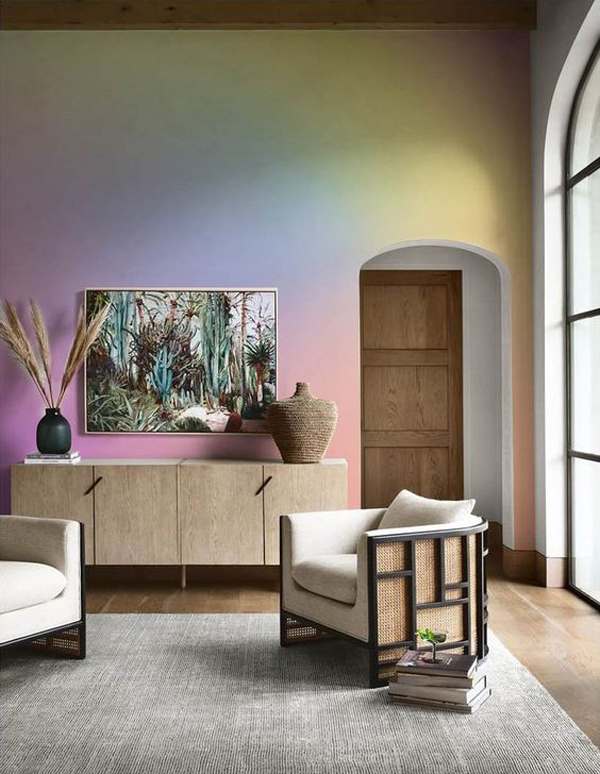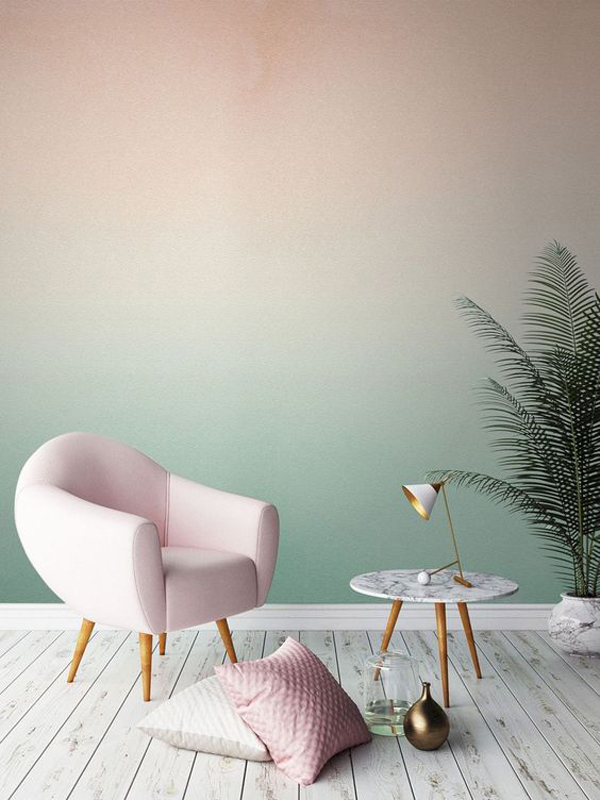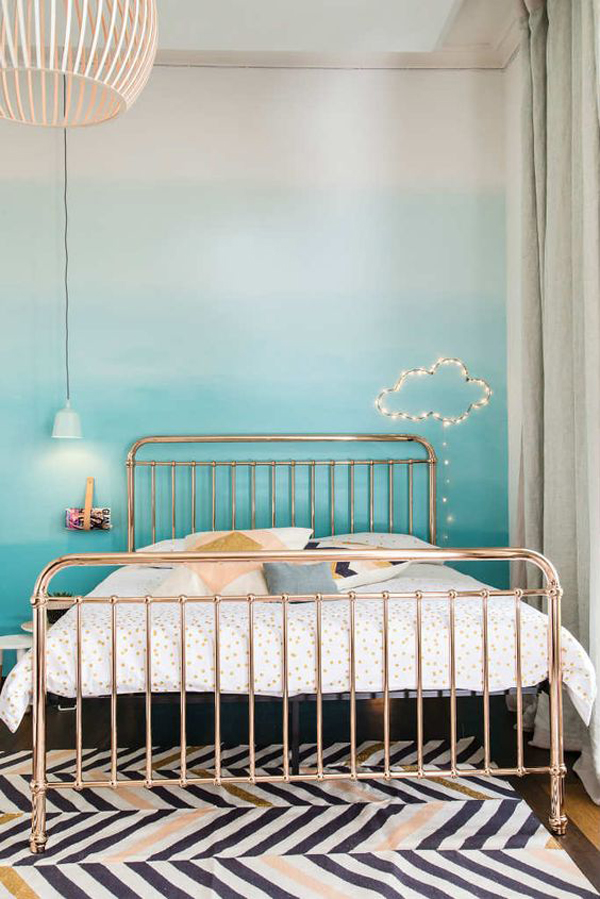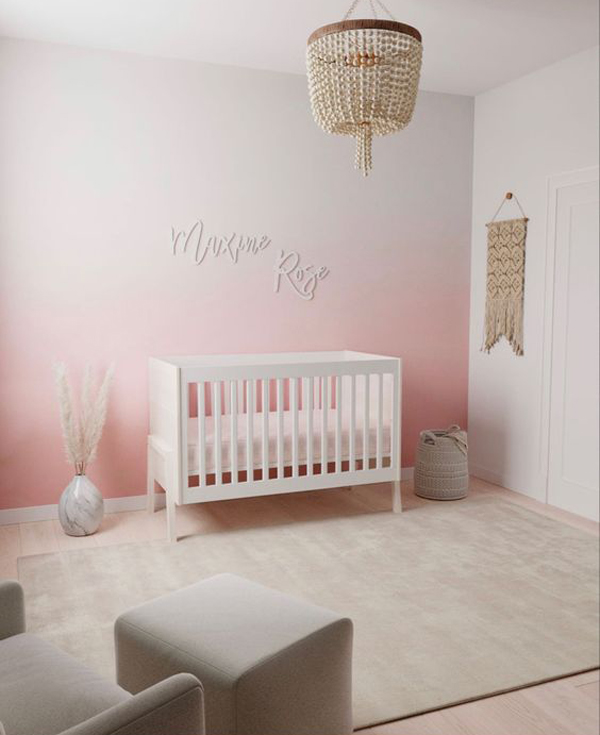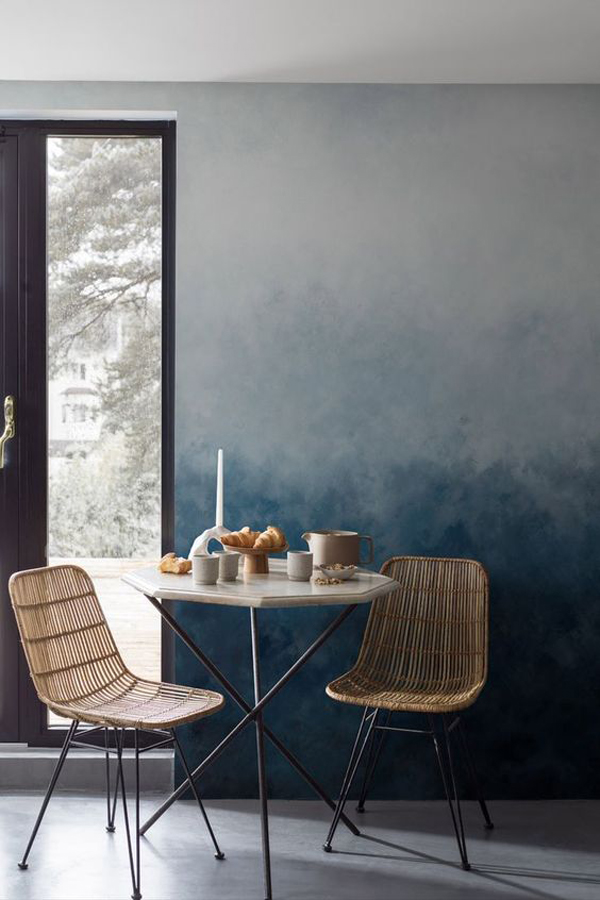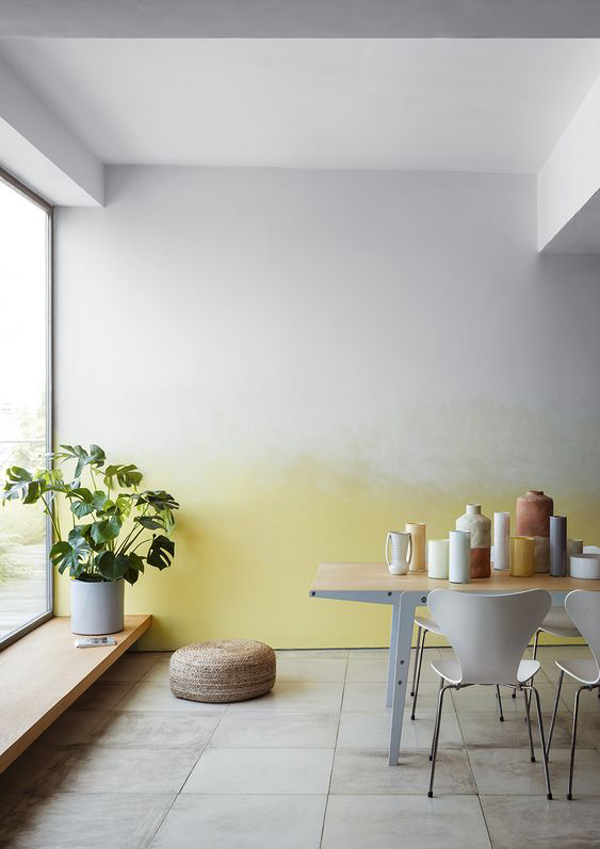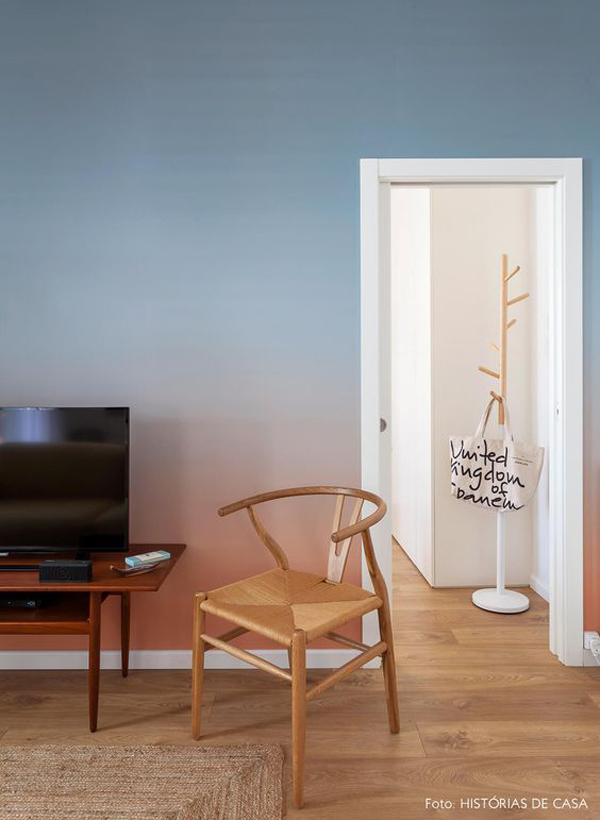The choice of interior paint greatly influences the overall appearance of the room. Whether you want to present a minimalist, vintage, contemporary, Scandinavian, or even farmhouse style, using the right paint colors will support your decoration theme. From neutral color schemes to bold colors, today we want to introduce gradient wall paint ideas for those of you who want to look different. For those of you who don’t know, this technique combines two different colors, usually from a light color scheme to a darker color.
Any room will look stunning using gradient paint. The reason is, this gradient paint technique can make the colors appear to give the impression of texture and depth. It’s also a unique way to visually enhance a room without looking overdone. If you are interested in bringing gradient colors to your interior, here we have some tips for applying gradient techniques to the walls of your house. Let’s take a look!
Clean the area of the wall you want to paint
The first thing you have to do is of course clean the wall area where you want to add gradient paint. To make painting easier and avoid failure, you should carefully prepare the wall to be painted and make sure it is completely dry. This includes removing all wallpaper and wall hangings, including removing all peeling paint. Then, coat the wall you want to paint using white as the base paint.
Prepare the gradation paint you want
To be able to produce gradient paint with good texture and depth, you need to prepare two colors of wall paint. You can use a mix of colors as you wish, but make sure the first color is the lightest paint, while the second color can be a darker color but still in the same color spectrum. Another idea, you can also add a third color to get a wider gradient appearance.
Determine the gradient direction
Once you are sure of the gradient paint combination, you need to determine the direction of the gradient. For example, you can create vertical, horizontal, diagonal or linear directions. Just choose according to your wishes and allow it to be applied to your room. For example, you can try painting the walls from dark to light tones from bottom to top. This will create a wider visual effect in the room.
Create a gradient look
Determining the appearance of the gradation is also important so that the paint displayed does not look messy. For example, for a blue gradation, apply the darker blue first from the bottom to half of the wall. Then, add a lighter blue about 50 cm and then the top part can use white. Smoothly blend the first and second colors to mix them perfectly to create a smooth color transition effect. Finally, do the same for the second and third colors.
Below are some examples of interior images with gradient paint that you can copy!

